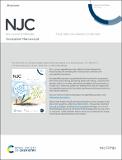Files in this item
Panchromatic Ru(II)-polypyridyl complexes as NIR emitters
Item metadata
| dc.contributor.author | Pal, Amlan K. | |
| dc.contributor.author | Adusumalli, Venkata Nanda Kishor Babu | |
| dc.date.accessioned | 2020-09-02T23:34:27Z | |
| dc.date.available | 2020-09-02T23:34:27Z | |
| dc.date.issued | 2019-09-03 | |
| dc.identifier | 261011857 | |
| dc.identifier | 27378438-093f-4dcd-bb1b-11ed6d3ca481 | |
| dc.identifier | 85072596645 | |
| dc.identifier | 000487373300001 | |
| dc.identifier.citation | Pal , A K & Adusumalli , V N K B 2019 , ' Panchromatic Ru(II)-polypyridyl complexes as NIR emitters ' , New Journal of Chemistry , vol. In press . https://doi.org/10.1039/C9NJ03644J | en |
| dc.identifier.issn | 1144-0546 | |
| dc.identifier.other | ORCID: /0000-0002-5677-5070/work/61370159 | |
| dc.identifier.uri | https://hdl.handle.net/10023/20538 | |
| dc.description | AKP thanks the Leverhulme Trust for an early career fellowship (ECF-2017-326), ScotCHEM for a short-term Postgraduate and Early Career Researcher Exchange (PECRE) fellowship and University of St Andrews for financial support. VNKBA thanks the UGC for a fellowship. | en |
| dc.description.abstract | Two novel mer-Ru(II) heteroleptic complexes containing stongly donating tridendate ligands (dgpy and dgpz) were synthesised and optoelectronically characterised. These complexes exhibited quasi-reversible ligand- and metal-based redox events and panchromatic absorption with the lowest energy absorption maxima trailing up to 750 nm. These panchromatic dyes were found to be NIR emissive at λPL ~ 835 nm with associated excited-state lifetimes (τPL) of ~ 10 ns. The enhanced photophysical properties of these complexes compared to those of [Ru(tpy)2]2+ (tpy = 2,2′:6′,2′′-terpyridine; λabs < 575 nm, λPL ~ 629 nm and τPL ~ 0.25 ns) are due to the larger 3MLCT-3MC energy-gap as a combined effect of larger bite angle and strong σ-donation offered by the dgpy and dgpz ligands. | |
| dc.format.extent | 4 | |
| dc.format.extent | 1250129 | |
| dc.language.iso | eng | |
| dc.relation.ispartof | New Journal of Chemistry | en |
| dc.subject | QD Chemistry | en |
| dc.subject | DAS | en |
| dc.subject.lcc | QD | en |
| dc.title | Panchromatic Ru(II)-polypyridyl complexes as NIR emitters | en |
| dc.type | Journal article | en |
| dc.contributor.sponsor | The Leverhulme Trust | en |
| dc.contributor.institution | University of St Andrews. School of Chemistry | en |
| dc.identifier.doi | 10.1039/C9NJ03644J | |
| dc.description.status | Peer reviewed | en |
| dc.date.embargoedUntil | 2020-09-03 | |
| dc.identifier.grantnumber | ECF-2017-326 | en |
This item appears in the following Collection(s)
Items in the St Andrews Research Repository are protected by copyright, with all rights reserved, unless otherwise indicated.

